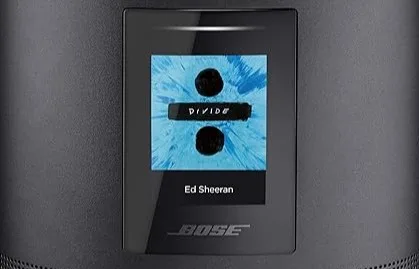
Assessing Your Smart Home Needs’ takes you on a journey into the future of residential living. In this era of smart homes, envision the seamless control of every electronic device through a simple tap or a spoken command. Beyond fascination, explore practical applications aligned with contemporary requirements for efficiency, safety, and sustainability. Delve deeper into compelling reasons why investing in smart home technology is innovative and indispensable for you.
Table of Contents
- Installing and Configuring Smart Home Devices
- Overcoming Challenges in Implementing Smart Home Solutions
- The Future of Smart Homes
- Conclusion
- FAQs
Understanding Smart Homes
Smart homes refer to residences equipped with interconnected Internet of Things (IoT) devices designed to optimize functionality, convenience, and energy savings. They differ significantly from conventional houses due to their ability to adapt to inhabitants’ behaviors, thus offering customizable experiences tailored to individual lifestyles.
Identifying Your Needs
Assessing your smart home needs forms the cornerstone of deciding whether going smart makes sense for you. Factors such as budget, current infrastructure readiness, desired functionalities, and preference for manual versus automated operations play pivotal roles during this evaluation phase.
Top Reasons to Invest in Smart Home Technology
Here are four compelling reasons to embrace smart home solutions:
Energy Savings
According to the Consumer Technology Association, smart thermostats alone can save households up to $131-$145 annually on energy costs. Add to that the potential savings offered by LED bulbs, power strips, and occupancy sensors, and you have a winning combination contributing towards reduced carbon emissions and substantial monetary gains over time.
You may like to read the series of articles about Energy Saving
Enhanced Safety and Security
Connected smoke detectors, leak sensors, and security cameras keep homeowners informed about possible hazards or breaches around the clock. Real-time alerts delivered via mobile devices enable swift responses to emergencies, thereby increasing peace of mind.
You may like to read the series of articles about Security Improvement
Improved Accessibility
Automated doors, motorized shades, and wheelchair-compatible elevators facilitate independent living for differently abled individuals. Moreover, speech recognition technologies empower elderly residents to manage their environment effortlessly, promoting dignified aging in place.
You may like to read the series of articles about Accessibility
Increased Property Value
Modern buyers appreciate move-in-ready properties featuring state-of-the-art amenities. Therefore, integrating smart home features into real estate assets potentially boosts resale values and attracts discerning customers seeking contemporary dwellings.
Boost Property Value With Smart Devices: A Comprehensive Guide
Selecting the Right Smart Home Devices
With myriads of brands vying for consumer attention, choosing suitable products becomes paramount. Begin by listing down prioritized functions followed by researching reputable manufacturers known for reliability, customer support, and positive reviews.
Popular Smart Home Devices
Let’s look at some commonly adopted smart home devices:
Smart Thermostats
These devices intelligently regulate indoor temperatures based on occupancy patterns and ambient conditions. Features like geofencing, vacation modes, and advanced algorithms maximize comfort while minimizing energy waste.
Smart Thermostats: Maximizing Energy Savings
Smart Locks
Secure your premises with keyless entry systems supporting temporary passcodes, biometric authentication, and remote unlocking abilities. Many models also notify users whenever someone enters or exits the property.
Smart Locks: The Future of Secure Homes
Security Cameras and Systems
Monitor activities inside and outside your home using HD video feeds accessible via dedicated apps. Advanced analytics software identifies unusual movements, triggering instant notifications upon detection.
Smart Home Security Cameras: A Comprehensive Starting Guide
Lighting Control Systems
Adjust illumination levels according to natural daylight availability, human presence, or mood settings. Wireless switches, dimmers, and color tunable lamps contribute towards visual appeal and operational efficiencies.
Voice Assistants
Hands-free operation made possible through virtual assistants like Amazon Alexa, Google Assistant, and Apple Siri streamlines task completion within connected environments. Request music playlists, order groceries, or control appliances using simple vocal cues.
Installing and Configuring Smart Home Devices
While several devices come with DIY installation guides, engaging professional technicians ensures correct setup and configuration. Post-installation calibration guarantees optimal performance aligning with user expectations.
You may like to read the series of articles about Smart Home Device Installation
Overcoming Challenges in Implementing Smart Home Solutions
Standardization efforts across industry players aim to mitigate compatibility woes faced by consumers. Meanwhile, educating oneself regarding product specifications helps avoid pitfalls during selection and implementation stages.
The Future of Smart Homes
Integration of artificial intelligence, machine learning, and augmented reality promises immersive experiences coupled with predictive anticipation of inhabitant desires. Expect refined user interfaces, heightened personalization, and robust cybersecurity measures safeguarding sensitive information.
Conclusion
Discover tangible benefits in ‘Assessing Your Smart Home Needs,’ encompassing energy conservation, safety enhancement, accessibility improvement, and property value appreciation through embracing smart home technology
FAQs
- What does a smart home system entail?
A comprehensive smart home system comprises interlinked devices communicating over standardized protocols to deliver coordinated functionalities aimed at improving user experiences. - How much do smart homes typically cost?
Prices vary widely depending on selected components; however, modest setups begin around $500, extending upwards based on complexity and scale. - Can renters adopt smart home technologies too?
Absolutely! Portable devices requiring minimal modifications can be implemented even in rentals, adding convenience without violating lease agreements. - Are smart homes vulnerable to hacking?
Like any digital platform, risks exist but can be mitigated through rigorous manufacturer testing, strong password practices, and regular firmware updates. - Do insurance companies offer discounts for smart homes?
Indeed, insurers acknowledge decreased risk exposure linked to proactive prevention mechanisms inherent in smart home technologies. Discount rates vary among providers, so consult yours for accurate details.


